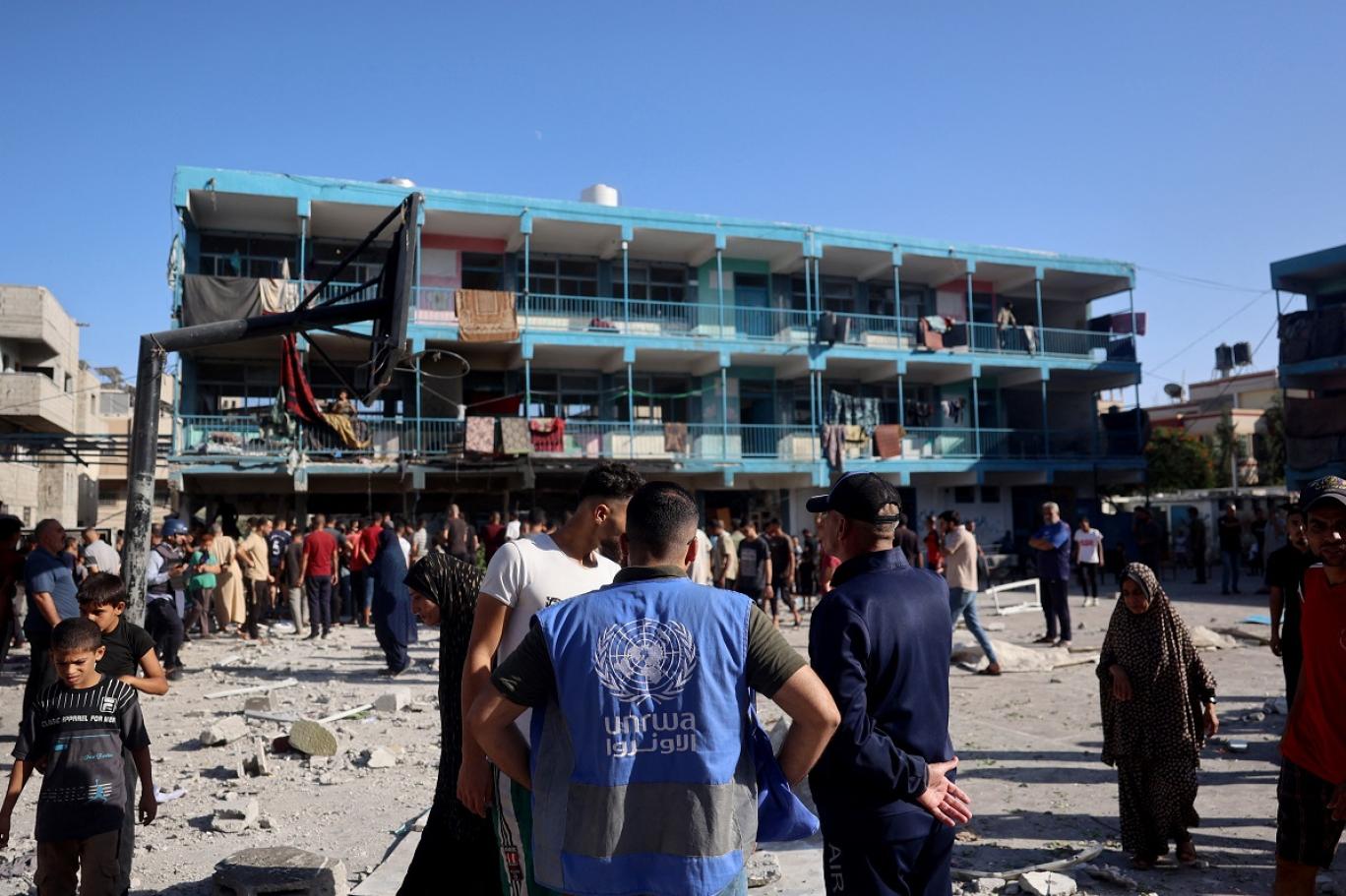AhlulBayt News Agency: Students in the Gaza Strip face an uncertain fate after losing the first academic year, which has become difficult to recover as the new year begins. This has raised serious concerns among parents about the loss of the younger generations’ right to education.
In an attempt to address these risks, the Ministry of Education in Ramallah announced the launch of a special program for students in the Gaza Strip by integrating last year’s academic year with the current one through electronic platforms that will be launched later, which will include condensed core subjects from the previous academic year.
The Quds Press agency reported on Sunday that the education directorates in Ramallah have communicated with teachers in the Gaza Strip to identify their locations. They have also instructed them to begin counting students from the primary stage, grades one to four to create a database to know the exact number of students who can attend either in-person or online classes as soon as they are launched.
The agency quoted unnamed sources saying that preparations are underway to establish classrooms for primary levels from grades one to four in areas claimed by the occupation to be humanitarian in the western part of the Strip. The classes will be conducted in groups in person, with two to three days a week allocated for each group to accommodate as many students as possible.
The same sources noted that for weeks, work meetings have been coordinated between the Ministry of Education in both Ramallah and Gaza, in collaboration with UNRWA, to print condensed schoolbooks for Arabic and mathematics for primary students on a trial basis. This experience will be evaluated by the end of November, and if successful, it will be expanded to other educational stages.
However, these preparations, which accompany online education for students in the Strip who are in Egypt and other countries, face many obstacles, such as the limited options available for establishing schools or classrooms in the alleged humanitarian areas amidst the influx of displaced people.
There are also logistical challenges, such as the difficulty of setting up classrooms using tents and nylon that do not protect against the summer heat and may leak rainwater in winter.
Furthermore, previous experiences of establishing school classrooms have shown the difficulty of implementing in-person education amid ongoing genocide, repeated displacement, and indiscriminate shelling that distracts both teachers and students, thus undermining the primary goal of in-person education, which is to acquire and comprehend information.
According to data published by the Ministry of Education, more than 630,000 students in the Gaza Strip have been deprived of school seats for the second consecutive year, among them over 58,000 children who missed the joy of starting first grade.
The ministry explained that since the onset of the genocide against Gaza on October 7, 2023, 90% of school buildings in all governorates of the Strip have been damaged, while 39,000 students were unable to take the high school exam last year.
/129
In an attempt to address these risks, the Ministry of Education in Ramallah announced the launch of a special program for students in the Gaza Strip by integrating last year’s academic year with the current one through electronic platforms that will be launched later, which will include condensed core subjects from the previous academic year.
The Quds Press agency reported on Sunday that the education directorates in Ramallah have communicated with teachers in the Gaza Strip to identify their locations. They have also instructed them to begin counting students from the primary stage, grades one to four to create a database to know the exact number of students who can attend either in-person or online classes as soon as they are launched.
The agency quoted unnamed sources saying that preparations are underway to establish classrooms for primary levels from grades one to four in areas claimed by the occupation to be humanitarian in the western part of the Strip. The classes will be conducted in groups in person, with two to three days a week allocated for each group to accommodate as many students as possible.
The same sources noted that for weeks, work meetings have been coordinated between the Ministry of Education in both Ramallah and Gaza, in collaboration with UNRWA, to print condensed schoolbooks for Arabic and mathematics for primary students on a trial basis. This experience will be evaluated by the end of November, and if successful, it will be expanded to other educational stages.
However, these preparations, which accompany online education for students in the Strip who are in Egypt and other countries, face many obstacles, such as the limited options available for establishing schools or classrooms in the alleged humanitarian areas amidst the influx of displaced people.
There are also logistical challenges, such as the difficulty of setting up classrooms using tents and nylon that do not protect against the summer heat and may leak rainwater in winter.
Furthermore, previous experiences of establishing school classrooms have shown the difficulty of implementing in-person education amid ongoing genocide, repeated displacement, and indiscriminate shelling that distracts both teachers and students, thus undermining the primary goal of in-person education, which is to acquire and comprehend information.
According to data published by the Ministry of Education, more than 630,000 students in the Gaza Strip have been deprived of school seats for the second consecutive year, among them over 58,000 children who missed the joy of starting first grade.
The ministry explained that since the onset of the genocide against Gaza on October 7, 2023, 90% of school buildings in all governorates of the Strip have been damaged, while 39,000 students were unable to take the high school exam last year.
/129

